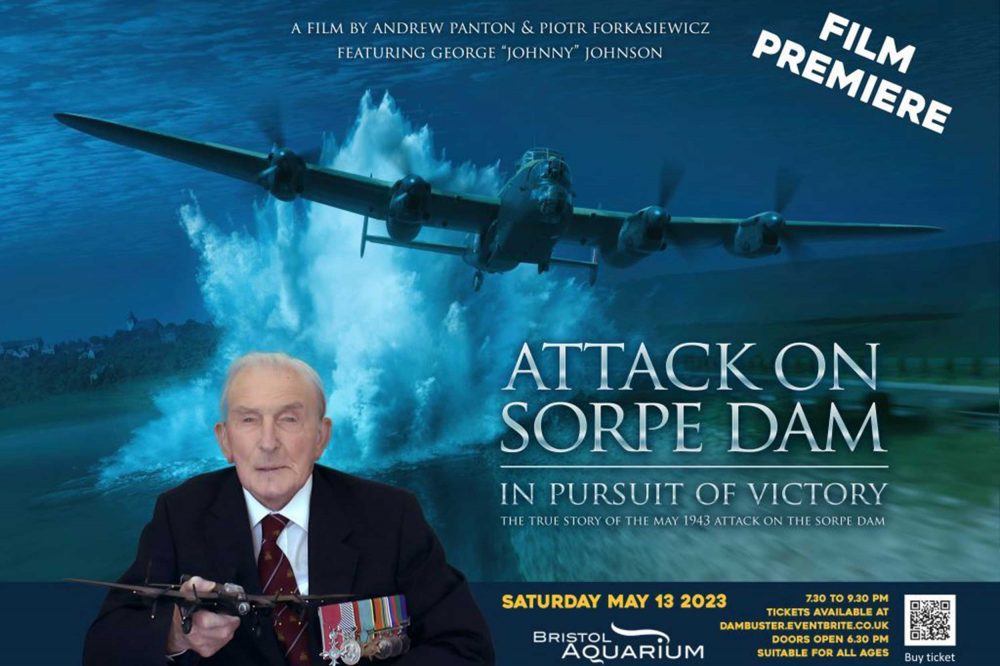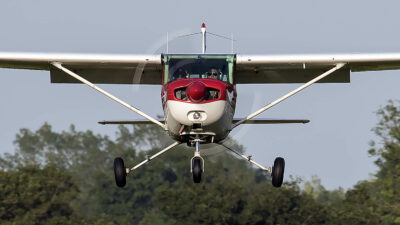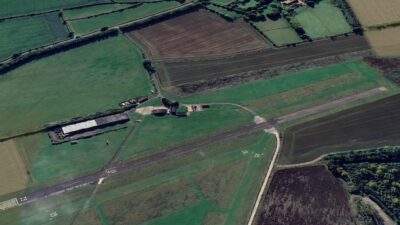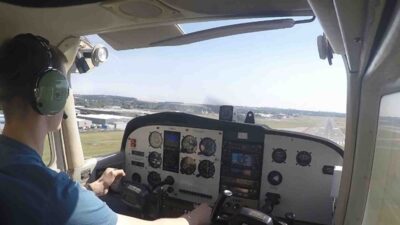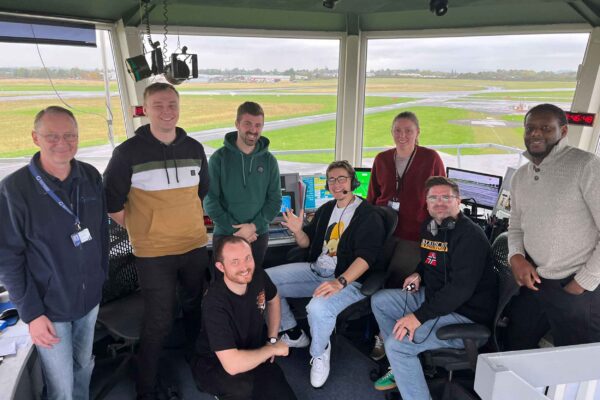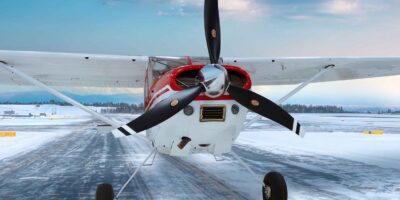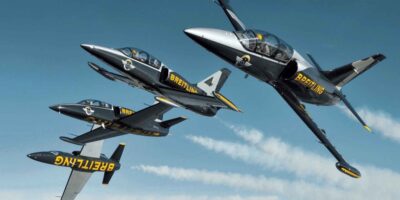Tickets are now available for the premiere of a new film about the famous WWII Dambusters raid. It’s called Attack On Sorpe Dam and tells the first hand story of the last surviving member of the Dambuster squadron, George ‘Jonny’ Johnson.
The premiere is on Saturday, 13 May at Bristol Aquarium and tickets are available at Dambusters.Eventbrite.co.uk. After the Bristol premiere, the film will be shown in Lincolnshire at the Kinema in Woodhall Spa on Tuesday, 16 May and Wednesday, 17 May.
How the film was made
In 2017 film makers Andrew Panton and Piotr Forkasiewicz met George ‘Johnny’ Johnson. Johnny explained how the attack on the Sorpe dam involved a completely different method of attack compared to the Mohne and Eder dams. He pointed out that the attack on the Sorpe Dam was not featured in the original 1955 Dambusters movie.
With this in mind Andrew and Piotr decided to set out on a journey to create a film that tells Johnny’s Dambusters story in a way he wished it to be remembered.
The Attack on Sorpe Dam film follows the story of Johnny and his aircrew from March 1943, on joining a newly formed squadron, for a top secret, special operation that had the potential to shorten the war in Europe.
Johnny describes the dangerous low flying training and events leading up to the operational briefing on 16 May 11943. Johnny and his crew finally discover what they are expected to do and are presented with what seems like an impossible task. They are to fly at 100 feet in a four engine Lancaster bomber at night, over many miles of occupied enemy territory.
On reaching the target, they need to drop a new weapon that has never before been tried operationally, with pin-point accuracy and in a way they had not practiced and then make their way back home safely. Nothing like this had ever been attempted.
The film’s director Andrew Panton said, “Johnny and I wanted this film to provide an accurate representation of what actually happened and be true to the facts. Johnny was involved throughout the production reviewing the research and screenplay as well as checking through the final edit to make sure he was happy with it.
“Johnny provides the entire narrative telling the story in his own words, exactly as it happened, and the visual effects totally reflect the narrative. The visual interpretation of the narrative really helps the viewer understand and experience the events as Johnny describes them.
“For people who are looking for a historically accurate first-hand account, of what it was like to be a part of the Dambusters operation, brought to life with new visual effects, this film is for them.
“In the early days of the project we were fortunate to visit RAF Scampton and do some in context interviews with Johnny to capture specific insights.
“In 2017 and 2018 Johnny was taken on two very special adventures. At the age of 95 he flew in the front seat of a helicopter along the Derwent dam reservoir and using a replica hand-held wooden bombsight he once again practiced lining up on the two towers of the Derwent dam. The last time he did that was in April 1943.
“The biggest highlight of the research was to take Johnny to Germany and again put him in the front seat of a helicopter. This time we flew him over the Sorpe dam and followed the same line of attack his Lancaster AJ-T flew on the night of May 17 1943. Although we were not flying at 60 feet, Johnny said that was one of the most memorable moments of his life and the 75 years just melted away. We then flew over the Mohne dam which again was something special for Johnny as the last time he saw this dam from the air was on his way back from the Sorpe dam when he saw the breached dam and the flood in the valley below the dam.”
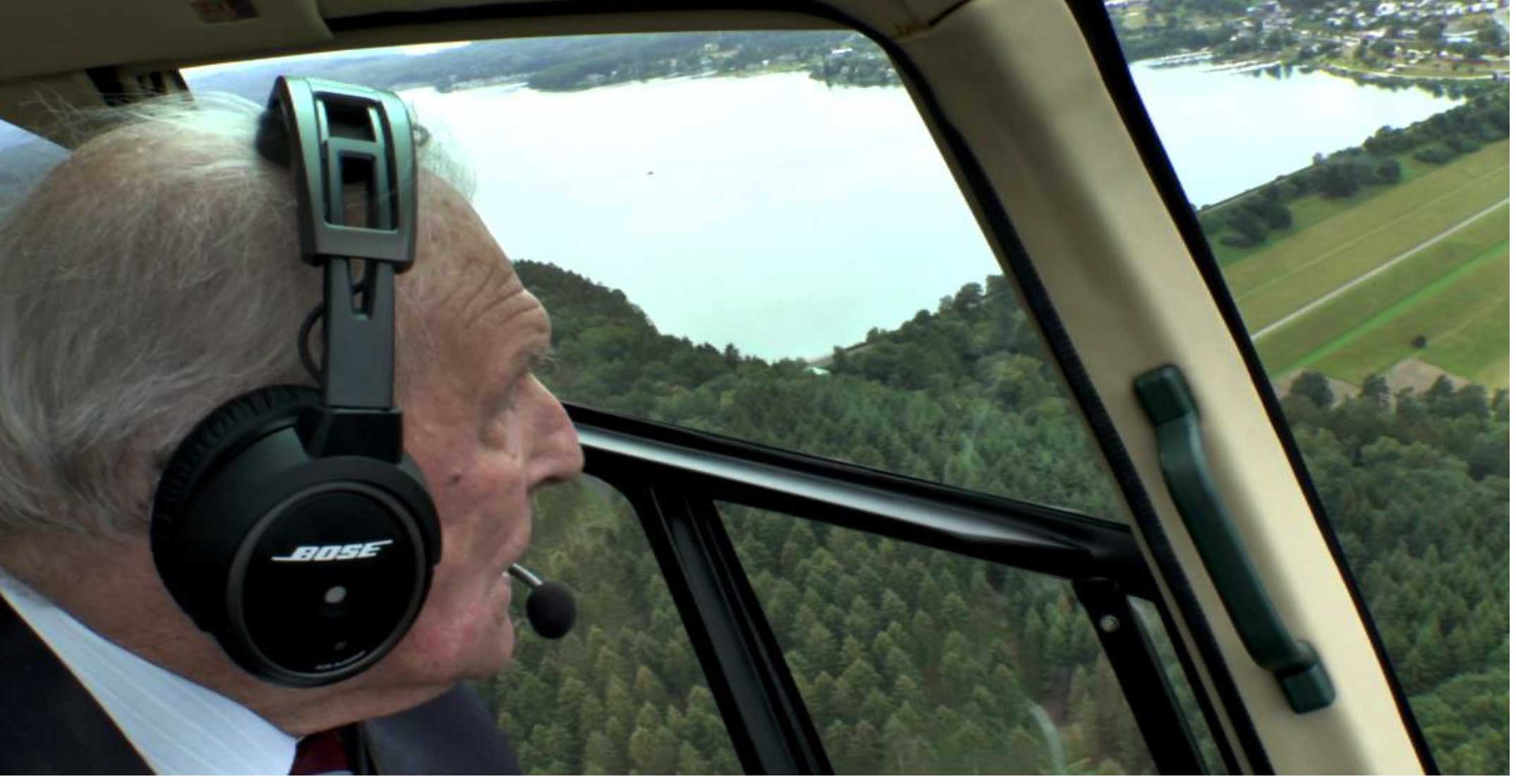
After 75 years, George ‘Johnny’ Johnson once again flies over the Sorpe Dam in Germany. Photo: Andrew Panton
Andrew continued, “Being able to interview Johnny at the Sorpe and Mohne dams allowed me to establish specific details regarding the line of attack and the routes taken which needed to be shown in the film. The support of Dr John Sweetman author of Operation Chastise and Dr Robert Owen, Official Historian of the 617 Squadron Aircrew Association has been much appreciated in making sure specific details in the film are accurately depicted.
“I would like to acknowledge my friend Piotr Forkasiewicz for the truly outstanding job he has done throughout this film project. He has made the biggest contribution to this film in terms of bringing Johnny’s story to life with the visual effects that create a very engaging viewer experience.
“There were many scenes we simply could not film in the real world and I have been very grateful for the support of the CAMERA team at the University of Bath. Martin Parson’s and his team helped create the digital aircrew, WAAFs, ground crew and German anti-aircraft gunners that are featured in various scenes that, to date, have not been seen before.”

Digital visual effects show flying over the Sorpe Dam. Image: Piotr Forkasiewicz
The film’s Visual Effects Producer Piotr Forkasiewicz added, “When I first met Andrew in 2015 I could have never imagined that I would be embarking on a journey to create a film that features Johnny Johnson’s Dambusters story. As a film and aviation enthusiast I have always had an interest in the Dambusters story.
“After meeting Johnny in 2017, I could see his part of the Dambusters story has not had so much attention. I felt that Johnny’s complete story should be captured in film. It was clear to me there was an opportunity to make a fascinating film and as a visual storyteller I could work on something very special.
“Throughout the production there were many challenges. Having a digital Dambuster Lancaster bomber was critical. Fortunately by the time I started this project I already had one as I had spent eight years creating a 3D Dambuster Lancaster model for a book titled ‘Dambuster Lancaster’. Thanks to Mark Postlethwaite and other Lancaster bomber experts I was able to create the Avro Lancaster BIII Type 464 Provisioning variant.
“The film required a very high level of historical accuracy which meant creating specific scenes as they would have looked in May 1943. These scenes included the Sorpe and Mohne Dams as well as RAF Scampton and the island of Vlieland on the Dutch coast. All the locations look quite different now compared to 80 years ago and had to be created digitally.
“The main focus of the action takes place over the Sorpe Dam. Andrew and I wanted this to look exactly as it did on the night of May 16 1943. We discovered a series of old photos and postcards from the late 1930s which gave an excellent reference to work from. It took me many hours to recreate the Sorpe dam, the village of Langscheid on the hill overlooking the dam and the surrounding landscape.”

Essential for the visual effects was creating a digital Avro Lancaster exactly as it would have been flown
Piotr Forkasiewicz continued, “The CAMERA team were able to create digital 3D scans of RAF aircrew and ground crew, WAAFs and even German anti-aircraft gunners.
“Using motion capture technology the CAMERA team were then able to record the body movements of actors dressed in motion capture suits. I was able to apply these motion files to digital characters and make them move with human movements and behaviours.
“This allowed me to create several scenes that were impossible to film in the real world such as the scenes on the airfield where the aircrews are getting on and on the crew buses and boarding the Dambuster Lancaster aircraft.”
Attack On Sorpe Dam website


